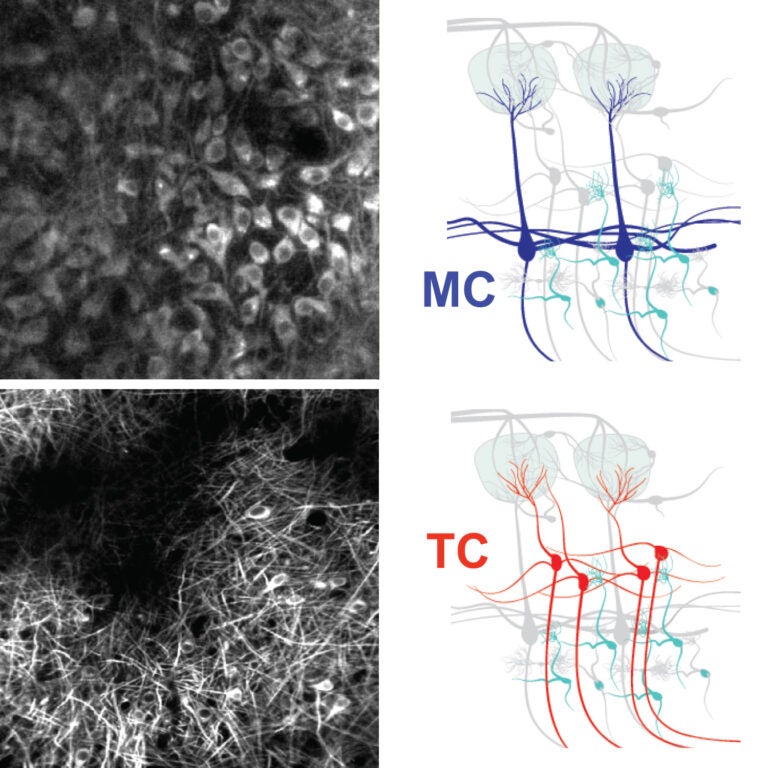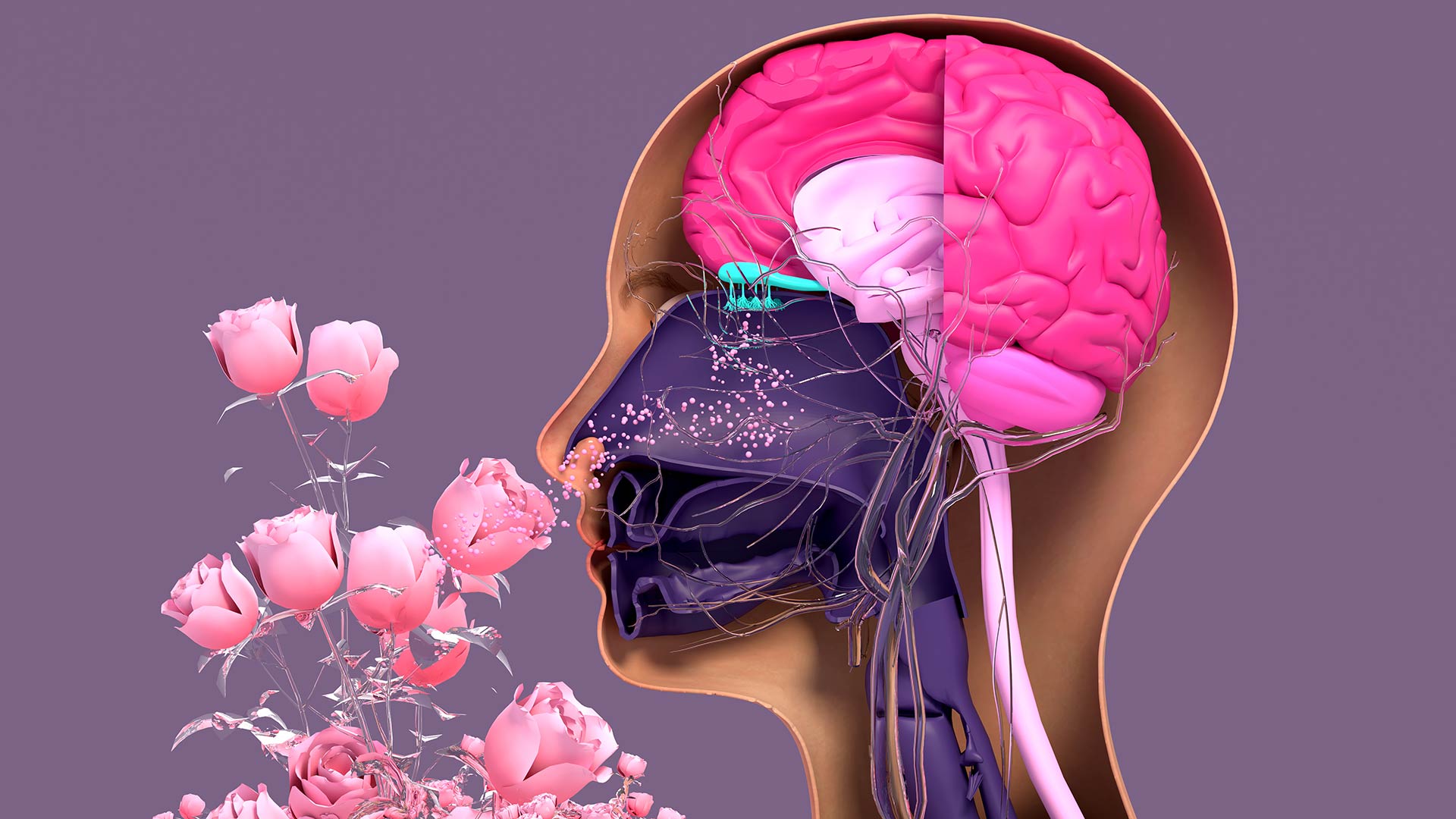Since their discovery over 100 years ago, neurons in the brain’s olfactory bulb called tufted cells have been difficult to study. The close proximity between tufted cells and other neurons called mitral cells, restricted the ability to dissect each individual neuron’s activity. By leveraging fluorescent genetic markers and new optical imaging technologies, Cold Spring Harbor Laboratory (CSHL) neuroscientists were able to compare the neurons’ activity.

CSHL Associate Professor Florin Albeanu and Assistant Professor Arkarup Banerjee discovered tufted cells are better at recognizing smells than mitral cells. They’ve found tufted cells are essential to one of two parallel neural circuit loops that help the brain process different odor features. The findings help explain how the brain takes in sensory information that influences behavior and emotions.
The researchers exposed mice to various odors, from fresh mint to sweet bananas, at different concentrations. They simultaneously tracked the neural activity of the two cell types and found tufted cells outperformed mitral cells. They were faster and better at distinguishing smells. They also captured a wider range of concentrations. While this illuminated a new role for tufted cells, it also led to a new unanswered question. “If tufted cells are actually better at recognizing odors, what then, is the function of mitral cells?” said Albeanu.
Albeanu and Banerjee suggest that perhaps mitral cells are part of a neural feedback loop that helps to enhance and predict certain smells that are important for an animal to learn and to respond to throughout its lifetime. This can guide animals locating odors in the environment. Banerjee explains:
“If you can’t tell whether it’s high [intensity] versus low [intensity], then you can’t track an odor. There’s no way to know that you’re actually getting closer to the odor source if you can’t tell the difference.”
The two neural circuit loops offer novel explanations for how the brain processes sensory information. Going forward, the new genetic and optical imaging tools used by the CSHL team, that include postdoc Honggoo Chae and graduate student Marie Dussauze, can uncover more undervalued neurons involved in sensory processing.
Written by: Luis Sandoval, Communications Specialist | sandova@cshl.edu | 516-367-6826
Funding
Brain & Behavior Research Foundation, Simons Foundation, National Science Foundation, National Institutes of Health
Citation
Chae, H., et al., “Long-range functional loops in the mouse olfactory system and their roles in computing odor identity”, Neuron, September 28, 2022. DOI: 10.1016/j.neuron.2022.09.005

